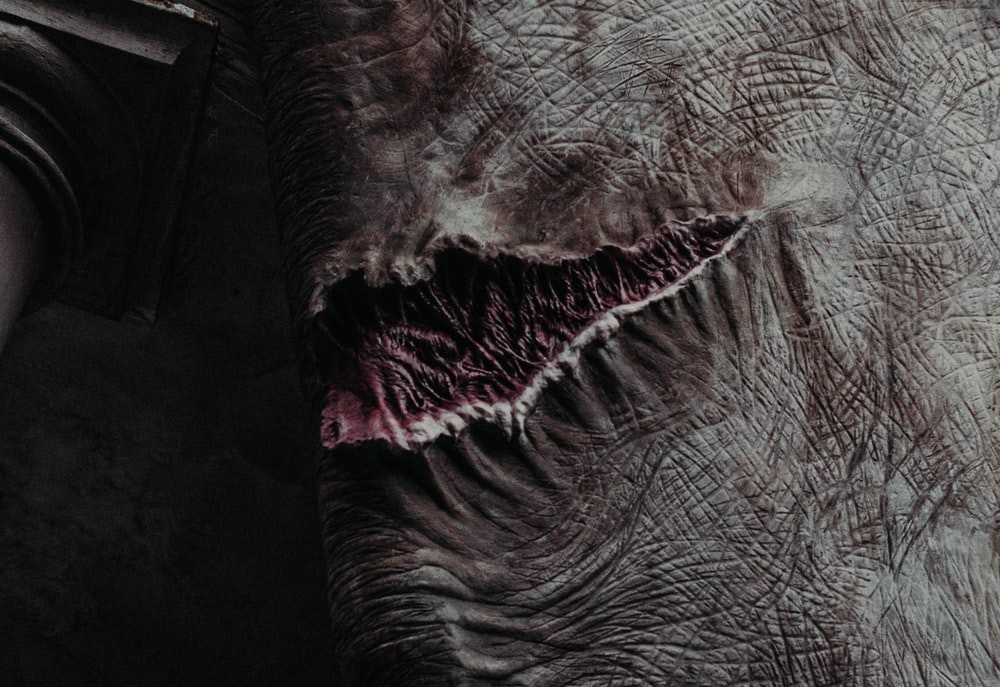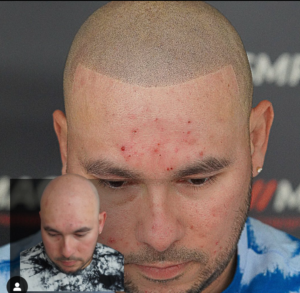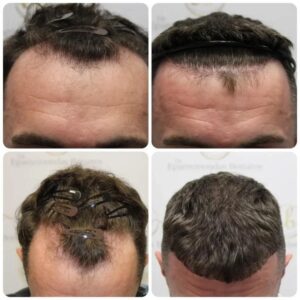Everyone has a unique perspective on scars, and self-confidence can be affected by those who bear them. The latest advancement in scar concealment is through scar camouflage tattoos, providing an innovative solution to hide and transform scars on the body. This technique goes beyond conventional scar reduction methods, offering a more personalized approach based on the appearance of the scar or burn.
Scar camouflage tattoos have gained popularity as an effective means to mask scars, whether they result from burns, injuries, or surgical procedures. This treatment not only conceals the physical blemish but also helps individuals reclaim their self-esteem by providing an aesthetically pleasing alternative.
Before opting for scar camouflage tattooing, it’s essential to understand the nuances of the procedure and the various options available based on the scar’s characteristics. This guide aims to provide up-to-date information on scar camouflage tattoos, offering insights into the process, considerations, and benefits associated with this innovative approach to scar reduction.
Whether you’re exploring options for personal reasons or seeking to support someone on their journey, this guide will equip you with the knowledge to make informed decisions regarding scar camouflage.
Table of Contents
Key Takeaway
Scar camouflage is a method of masking scar appearance with a tattoo of different pigment colors. It complements missing pigments or scars on the skin through coloring. It makes the scar less visible and increases the self-esteem of the beholder. Evaluation of the scarred body part comes first before the actual treatment process. You may notice redness after the process, but it will clear after a while.
What Does Scar Camouflage Imply?
Scar Camouflage, also known as camouflage tattooing, is a pigment mechanism that involves using needles to reduce scar impact and make the skin color blend together. It is a process that involves paramedical tattoo technicians using permanent makeup pigments to make the affected areas look natural.
It is gaining more popularity among people, not because of the camouflaging only but helps to gain self-esteem. The technique is admirable because it also works fine for stretch marks and other skin irregularities. It differs from the typical tattoo, as it smooths out the texture of the scar with the aid of digital needling.
Covering your scar with these techniques stimulates injury-healing responses, which helps wound areas to fade off and spread. Some people think scar camouflage treatment involves medical surgery. We can confirm to you that it is a non-surgical medical method.
Does Scar Camouflage Work?
Scar camouflage tattoos can effectively reduce the appearance of scars, making them less noticeable and blending in with the surrounding skin.
The effectiveness of scar camouflage depends on several factors, including the type and severity of the scar, the skill of the tattoo artist, and the individual’s skin type and healing process.
For raised or textured scars, scar camouflage may not completely eliminate the scar’s appearance but can significantly improve its overall look. In some cases, multiple sessions may be required to achieve the desired results.
Scar Camouflage Treatment Criteria
You should know certain things before deciding to go for scar camouflage. The process may not generate satisfactory results if you don’t meet the conditions. Proceeding without ascertaining that you checkmark all requirements may even complicate the scar.
You will get the best result of scar camouflage if:
- Your scar is not less than a year
- No sign of redness in the affected areas
- Your scar is lighter than the closest skin areas
- The scarred surface is not deep-cut
It’s normal to be curious about the scar camouflage procedure. Fortunately, there are answers to your curiosity when you meet the artist. Ensure that you acquire adequate information about the processing. It will help you to determine when to get it done. It would be best to learn about the different treatment plans available.
Benefits of Scar Camouflage Tattoo
- Improved self-confidence and body image: By diminishing the visibility of scars, scar camouflage tattoos can significantly enhance an individual’s self-perception and boost their overall self-esteem.
- Effective for various scar types: Scar camouflage tattoos can effectively address a wide range of scars, including those resulting from surgeries, accidents, burns, acne, and self-harm.
- Long-lasting results: While not entirely permanent, scar camouflage tattoos typically provide long-lasting results, with touch-ups occasionally needed to maintain the desired appearance.
- Non-invasive procedure: Unlike scar removal surgeries, scar camouflage tattoos are non-invasive and do not require incisions or anesthesia.
- Wide range of colors and techniques: Experienced scar camouflage artists employ a variety of techniques and pigments to achieve the most natural-looking results, catering to diverse skin tones and scar types.
Statistics on Scar Treatments
- The global scar treatment market, valued at USD 24 billion in 2022, is projected to reach USD 64.26 billion by 2032, with an expected CAGR of 10.4% from 2023 to 2032.
- The most common areas for scar camouflage tattoos are the face, chest, arms, and legs.
- The average cost of a scar camouflage tattoo procedure ranges from USD 200 to USD 1,500, depending on the scar’s size, complexity, and location.
Facts about Scar Camouflage Tattoo
- Scar camouflage tattoos are not a suitable option for raised or deeply recessed scars.
- The procedure may require multiple sessions to achieve optimal results.
- Proper aftercare is crucial for optimal healing and color retention.
- Scar camouflage tattoos may fade over time, necessitating touch-ups.
- It is essential to consult with a qualified and experienced scar camouflage artist to ensure safe and effective treatment.

What Are The Disadvantages Of Scar Camouflage?
While scar camouflage can be a beneficial treatment option, there are a few potential drawbacks to consider:
- Permanence: Scar camouflage tattoos are permanent, so you must ensure you’re fully committed to the procedure before undergoing it.
- Color fading: Over time, the colors of the tattoo may fade, requiring touch-ups.
- Scar tissue reaction: Scar tissue may not react as well to tattoo ink as normal skin, potentially leading to uneven pigmentation or scar texture.
- Allergic reactions: There’s a small risk of allergic reactions to the tattoo ink.
How Much Does A Scar Camouflage Tattoo Cost?
The cost of scar camouflage tattooing varies depending on the size and complexity of the scar, the location of the scar, and the experience of the tattoo artist. Generally, scar camouflage tattoos cost between $200 and $500 per session.
What Are The Techniques For Scar Camouflage?
Several techniques are used for scar camouflage, including:
- Skin tone repigmentation: This technique involves implanting pigments that match the surrounding skin tone into the scar tissue.
- Texture correction: For raised or textured scars, techniques like micro-needling or digital needling can be used to smooth out the scar’s surface.
- Areola and nipple reconstruction: Scar camouflage can be used to create realistic-looking areolas and nipples for women who have undergone mastectomies.
Is It Painful To Get A Camouflage Tattoo?
The pain level experienced during scar camouflage tattooing varies from person to person. The scar tissue may be more sensitive than normal skin, but most people find the procedure tolerable with the use of topical or local anesthesia.
Scar Types that You Can Camouflage
The feel and appearance of the scar are vital determinants when seeking corrective micro-pigmentation. What comes first is healing from the injury before the artist can recommend a suitable amendment procedure. Micro pigment color correction applies to all pigment loss, regardless of type.
The advancements in scar camouflage tattooing techniques have made it a versatile treatment option suitable for a wide range of scars, including:
- Surgical scars: Scar camouflage can effectively conceal scars resulting from surgery, such as c-sections, mastectomies, and other procedures.
- Keloids: Keloids are raised and often bumpy scars that can be challenging to treat. Scar camouflage can help to soften and blend these scars, making them less noticeable.
- Stretch marks: Stretch marks, common after pregnancy or weight fluctuations, can be effectively reduced in appearance using scar camouflage techniques.
- Burns: Scar camouflage can significantly improve the appearance of burns, particularly those with uneven pigmentation or texture.
- Acne scars: Scar camouflage can effectively address acne scars, particularly those with deep pits or discoloration.
You can camouflage any surgery type, depending on how the scar healed. That is why you should never be in a hurry for treatment. Allow the wound to heal for at least a year before approaching a paramedical tattoo technician for makeup. Working on the scar surface a few months after surgery is wrong because you feel it looks fine.
Healing of a scar passes through several stages, which take a gradual process before it heals completely. Even at that, ticking all the boxes of the criteria is essential.

Preparing for a Scar Camouflage Treatment
Now, you can guarantee that you have passed the requirements for the procedure. The next thing is to get yourself ready for the actual treatment. These are the things you should put in place:
Engage in Research
Any treatment type involving the body requires getting the best hands to do it. You shouldn’t approach any paramedical tattoo technician without doing your due diligence. A few things to look out for include experience, qualification, facility, reviews, and portfolios.
Go for Consultation
Even though you know that you qualify for scar camouflage, it is essential to go for a proper assessment. The conversation held will generate insights for both you and the technician. The tattoo artist must understand your body and medical history before anything else.
Follow Technician Pre-Treatment advice
Depending on your scar appearance, pre-treatment recommendations may surface from your consultation. It will help to keep the scar areas prepared for the camouflaging techniques. It makes the work of the artist easier and faster. Accordingly, the result obtained after pre-treatment is usually exceptional.
Budget Consideration
Several factors determine the cost of scar camouflage treatment. The top determinants are the paramedical tattoo technician’s experience, location, and complexity. Ensure you properly review these indicators before opting for the best that matches your budget. Note that insurance doesn’t cover scar camouflage. That makes it important to evaluate wisely.
Conclusion
Scar camouflage tattoo is one of the best solutions for anyone with injury marks. In scar camouflage tattooing, depending on the skin condition, the process involves the meticulous artistry of cosmetic tattooing, where skilled practitioners use medical tattooing techniques to achieve precise skin color matches, ensuring seamless skin camouflage through the application of specialized skin color tattooing.
However, don’t expect magic to happen immediately after the process. You must be consistent with the micro-pigmentation techniques to achieve your envisaged natural appearance. Recovering works like evolution; it happens gradually. Nothing stops you from looking the way you were before injury or surgery.



